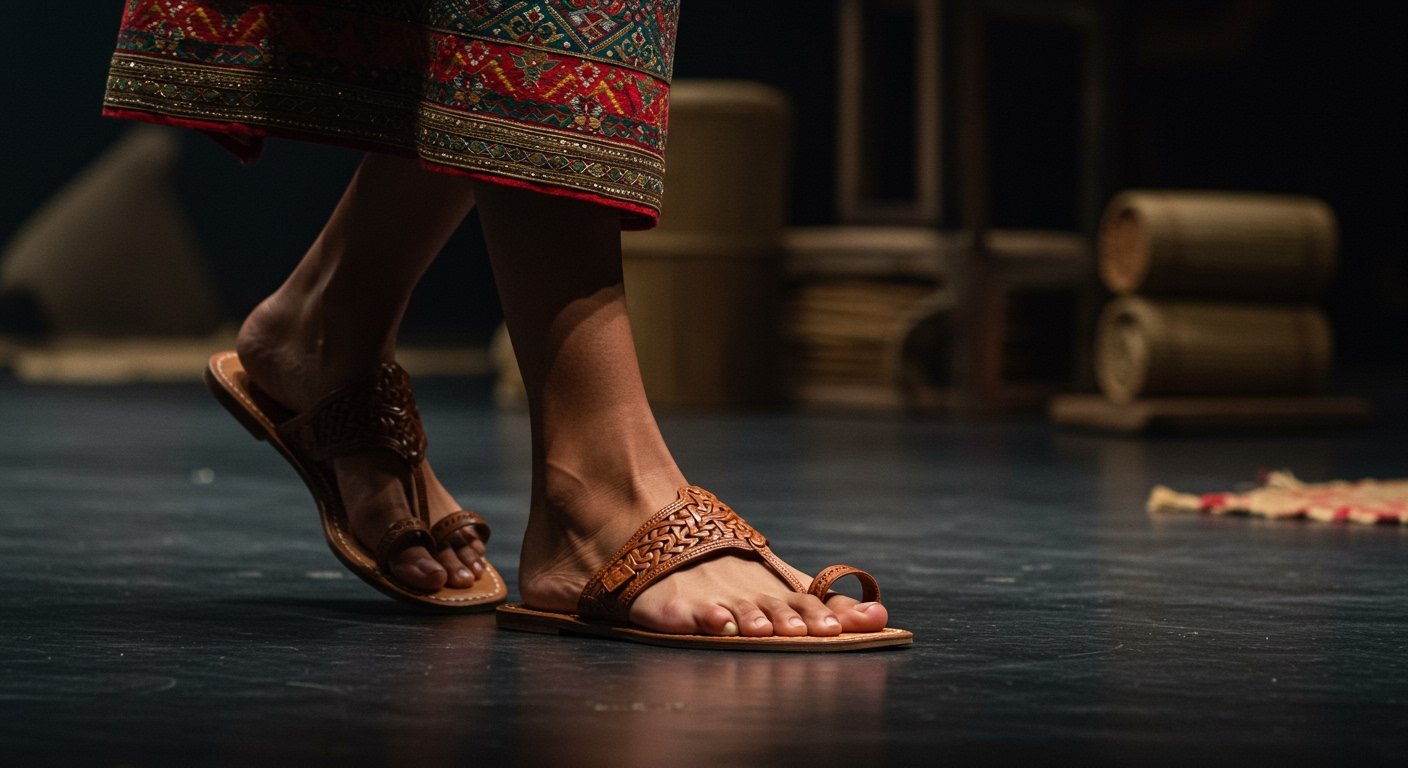Milan, Italy – The intersection of global high fashion and traditional craft has once again sparked debate, as Italian luxury house Prada recently showcased footwear during Milan Fashion Week that bore a striking resemblance to traditional Indian Kolhapuri sandals.
The presentation, part of Prada’s Spring/Summer 2026 menswear collection, featured what were described simply as “leather sandals” in the accompanying show notes. This seemingly innocuous description, however, triggered a significant backlash in India, where the distinctive Kolhapuri sandal design is deeply embedded in cultural heritage and artisanal tradition.
The Resemblance and Omission
The footwear displayed on the runway featured a design characterized by specific leather weaving and construction techniques that are hallmarks of Kolhapuri sandals. These sandals, handcrafted in the Kolhapur region of Maharashtra, India, have a centuries-old history and are popular across the country for their durability and unique aesthetic.
Critics quickly noted the strong visual parallels between the Prada sandals and the traditional Indian design. The absence of any acknowledgment or reference to an Indian connection in Prada’s official show notes proved particularly contentious. For many, this omission raised questions about inspiration versus appropriation, specifically concerning the uncredited use of designs rooted in specific cultural and artisanal traditions.
Reaction in India and Official Response
The reaction in India was swift and vocal. The perceived lack of attribution for a design with such a clear lineage led to widespread public discussion and criticism online and in the media. The issue escalated to the political level when a delegation representing Kolhapuri sandal manufacturers met with Maharashtra Chief Minister Devendra Fadnavis to formally protest Prada’s actions. This meeting underscored the seriousness with which the matter was being viewed by those directly involved in the craft.
Facing mounting pressure and public outcry, Prada issued a formal response. In a letter addressed to the Maharashtra Chamber of Commerce, the fashion house acknowledged the inspiration behind the controversial designs. Prada stated that the sandals were “inspired by traditional Indian handcrafted footwear, with a centuries-old heritage.” This acknowledgement, while coming after the initial presentation and subsequent controversy, marked a step towards recognizing the origins of the design elements.
Varied Perspectives on Credit and Culture
The incident highlighted the complex dynamics between global luxury brands and traditional crafts. While Prada’s acknowledgement provided some clarity, opinions remained divided on the issue of cultural appropriation and the potential impact on the traditional artisans.
Harish Kurade, an artisan from Maharashtra involved in crafting Kolhapuri sandals, expressed a degree of optimism regarding the situation. He reportedly saw the incident as potentially beneficial, suggesting that the exposure on a global platform like Milan Fashion Week could ultimately bring greater recognition and potential market opportunities for the authentic Kolhapuri craft. Kurade’s perspective represents one view – that high-profile inspiration, even if initially uncredited, can shine a spotlight on the source tradition.
However, this view was not universally shared. Other artisans, along with politicians and cultural activists, voiced significant concerns. They argued that presenting designs so closely resembling traditional Kolhapuri sandals without explicit and prominent credit constitutes cultural appropriation. Furthermore, concerns were raised about the potential for a major international brand to financially benefit from designs fundamentally developed and perfected by generations of traditional artisans, potentially without any reciprocal benefit flowing back to the source communities.
The Broader Conversation on Cultural Appreciation vs. Appropriation
The Prada incident is not isolated. It fits into a larger ongoing global conversation about cultural appropriation in the fashion industry, where elements from diverse traditions are frequently incorporated into collections. The debate often centers on whether such uses are acts of appreciation and homage that celebrate cultural diversity, or instances of appropriation that strip designs of their context, benefit commercially without giving credit, and potentially marginalize the original creators.
The case of the Prada sandals and their resemblance to Kolhapuri designs underscores the importance of transparency, attribution, and engagement with source communities when drawing inspiration from traditional crafts. As global fashion continues to look to diverse cultures for creative ideas, instances like this highlight the need for sensitivity and clear communication to navigate the fine line between inspiration and appropriation.
The resolution of the concerns raised by the Kolhapuri sandal manufacturers and the broader community in India remains a focal point. The incident serves as a reminder of the cultural significance embedded in traditional crafts and the responsibility of global brands when engaging with such rich heritage.





